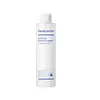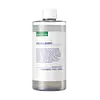What's inside
What's inside
 Key Ingredients
Key Ingredients

 Benefits
Benefits

 Concerns
Concerns

No concerns
 Ingredients Side-by-side
Ingredients Side-by-side

Water
Skin ConditioningDipropylene Glycol
HumectantGlycerin
HumectantButylene Glycol
Humectant1,2-Hexanediol
Skin ConditioningHydroxyethyl Urea
HumectantHydroxyacetophenone
AntioxidantPanthenol
Skin ConditioningGlycosyl Trehalose
Emulsion StabilisingCarbomer
Emulsion StabilisingHydrogenated Starch Hydrolysate
HumectantAllantoin
Skin ConditioningButyrospermum Parkii Butter
Skin ConditioningCaprylyl/Capryl Glucoside
CleansingBetaine
HumectantHydrogenated Lecithin
EmulsifyingSodium Phytate
Polyglyceryl-10 Laurate
Skin ConditioningSodium Hyaluronate
HumectantPolyglyceryl-10 Myristate
Skin ConditioningArginine
MaskingHelianthus Annuus Seed Oil
EmollientOlea Europaea Fruit Oil
MaskingPolyglyceryl-10 Stearate
Skin ConditioningLactobionic Acid
BufferingGlyceryl Caprylate
EmollientBis-Capryloyloxypalmitamido Isopropanol
EmollientCapryloyl Salicylic Acid
ExfoliatingDihydroxyisopropyl Palmoylpalmamide
HumectantEctoin
Skin ConditioningLinoleic Acid
CleansingMadecassoside
AntioxidantMyristoyl/Palmitoyl Oxostearamide/Arachamide Mea
Skin ConditioningPhytosterols
Skin ConditioningPogostemon Cablin Leaf Oil
MaskingSalvia Officinalis Oil
MaskingCandida Bombicola/Glucose/Methyl Rapeseedate Ferment
AntimicrobialElettaria Cardamomum Seed Oil
MaskingGlycolipids
Skin ConditioningTartaric Acid
BufferingAnthemis Nobilis Flower Oil
MaskingMentha Arvensis Leaf Oil
MaskingJuniperus Mexicana Oil
MaskingPropanediol
SolventSodium Hyaluronate Crosspolymer
HumectantHydrolyzed Glycosaminoglycans
HumectantBenzyl Glycol
SolventHydrolyzed Hyaluronic Acid
HumectantHydroxypropyltrimonium Hyaluronate
Ethylhexylglycerin
Skin ConditioningSodium Acetylated Hyaluronate
HumectantHyaluronic Acid
HumectantRaspberry Ketone
MaskingWater, Dipropylene Glycol, Glycerin, Butylene Glycol, 1,2-Hexanediol, Hydroxyethyl Urea, Hydroxyacetophenone, Panthenol, Glycosyl Trehalose, Carbomer, Hydrogenated Starch Hydrolysate, Allantoin, Butyrospermum Parkii Butter, Caprylyl/Capryl Glucoside, Betaine, Hydrogenated Lecithin, Sodium Phytate, Polyglyceryl-10 Laurate, Sodium Hyaluronate, Polyglyceryl-10 Myristate, Arginine, Helianthus Annuus Seed Oil, Olea Europaea Fruit Oil, Polyglyceryl-10 Stearate, Lactobionic Acid, Glyceryl Caprylate, Bis-Capryloyloxypalmitamido Isopropanol, Capryloyl Salicylic Acid, Dihydroxyisopropyl Palmoylpalmamide, Ectoin, Linoleic Acid, Madecassoside, Myristoyl/Palmitoyl Oxostearamide/Arachamide Mea, Phytosterols, Pogostemon Cablin Leaf Oil, Salvia Officinalis Oil, Candida Bombicola/Glucose/Methyl Rapeseedate Ferment, Elettaria Cardamomum Seed Oil, Glycolipids, Tartaric Acid, Anthemis Nobilis Flower Oil, Mentha Arvensis Leaf Oil, Juniperus Mexicana Oil, Propanediol, Sodium Hyaluronate Crosspolymer, Hydrolyzed Glycosaminoglycans, Benzyl Glycol, Hydrolyzed Hyaluronic Acid, Hydroxypropyltrimonium Hyaluronate, Ethylhexylglycerin, Sodium Acetylated Hyaluronate, Hyaluronic Acid, Raspberry Ketone
Water
Skin ConditioningButylene Glycol
HumectantGlycerin
HumectantPropanediol
SolventEuterpe Oleracea Fruit Extract
1,2-Hexanediol
Skin ConditioningProtease
ExfoliatingBetaine
HumectantPanthenol
Skin ConditioningRubus Fruticosus Fruit Extract
AstringentVaccinium Macrocarpon Fruit Extract
AstringentVaccinium Angustifolium Fruit Extract
Skin ProtectingRubus Idaeus Fruit Extract
AstringentSambucus Nigra Fruit Extract
AstringentXanthan Gum
EmulsifyingAllantoin
Skin ConditioningBeta-Glucan
Skin ConditioningFructan
Skin ConditioningStyrene/Vp Copolymer
Sodium Hyaluronate
HumectantPentylene Glycol
Skin ConditioningCaprylyl Glycol
EmollientWater, Butylene Glycol, Glycerin, Propanediol, Euterpe Oleracea Fruit Extract, 1,2-Hexanediol, Protease, Betaine, Panthenol, Rubus Fruticosus Fruit Extract, Vaccinium Macrocarpon Fruit Extract, Vaccinium Angustifolium Fruit Extract, Rubus Idaeus Fruit Extract, Sambucus Nigra Fruit Extract, Xanthan Gum, Allantoin, Beta-Glucan, Fructan, Styrene/Vp Copolymer, Sodium Hyaluronate, Pentylene Glycol, Caprylyl Glycol
 Reviews
Reviews

Ingredients Explained
These ingredients are found in both products.
Ingredients higher up in an ingredient list are typically present in a larger amount.
1,2-Hexanediol is a synthetic liquid and another multi-functional powerhouse.
It is a:
- Humectant, drawing moisture into the skin
- Emollient, helping to soften skin
- Solvent, dispersing and stabilizing formulas
- Preservative booster, enhancing the antimicrobial activity of other preservatives
Allantoin is a soothing ingredient known for its protective and moisturizingg properties. Because of this, it is often added to products with strong active ingredients.
Studies show higher concentrations of this ingredient can promote wound healing.
Though it can be derived from the comfrey plant, allantoin is produced synthetically for cosmetic products to ensure purity.
Learn more about AllantoinBetaine is a common humectant (a substance that promotes retention of moisture). It's known to be gentle on the skin and can help balance hydration.
This ingredient is best for improving hydration and soothing irritated skin. Studies also show it helps even out skin tone.
Fun fact: Betaine is naturally created in the skin and body. The kind found within cosmetic products can be either plant-derived or synthetic.
Another name for betaine is trimethylglycine.
Learn more about BetaineButylene Glycol (or BG) is used within cosmetic products for a few different reasons:
Overall, Butylene Glycol is a safe and well-rounded ingredient that works well with other ingredients.
Though this ingredient works well with most skin types, some people with sensitive skin may experience a reaction such as allergic rashes, closed comedones, or itchiness.
Learn more about Butylene GlycolGlycerin is already naturally found in your skin. It helps moisturize and protect your skin.
A study from 2016 found glycerin to be more effective as a humectant than AHAs and hyaluronic acid.
As a humectant, it helps the skin stay hydrated by pulling moisture to your skin. The low molecular weight of glycerin allows it to pull moisture into the deeper layers of your skin.
Hydrated skin improves your skin barrier; Your skin barrier helps protect against irritants and bacteria.
Glycerin has also been found to have antimicrobial and antiviral properties. Due to these properties, glycerin is often used in wound and burn treatments.
In cosmetics, glycerin is usually derived from plants such as soybean or palm. However, it can also be sourced from animals, such as tallow or animal fat.
This ingredient is organic, colorless, odorless, and non-toxic.
Glycerin is the name for this ingredient in American English. British English uses Glycerol/Glycerine.
Learn more about GlycerinPanthenol is a common ingredient that helps hydrate and soothe the skin. It is found naturally in our skin and hair.
There are two forms of panthenol: D and L.
D-panthenol is also known as dexpanthenol. Most cosmetics use dexpanthenol or a mixture of D and L-panthenol.
Panthenol is famous due to its ability to go deeper into the skin's layers. Using this ingredient has numerous pros (and no cons):
Like hyaluronic acid, panthenol is a humectant. Humectants are able to bind and hold large amounts of water to keep skin hydrated.
This ingredient works well for wound healing. It works by increasing tissue in the wound and helps close open wounds.
Once oxidized, panthenol converts to pantothenic acid. Panthothenic acid is found in all living cells.
This ingredient is also referred to as pro-vitamin B5.
Learn more about PanthenolPropanediol is an all-star ingredient. It softens, hydrates, and smooths the skin.
It’s often used to:
Propanediol is not likely to cause sensitivity and considered safe to use. It is derived from corn or petroleum with a clear color and no scent.
Learn more about PropanediolSodium Hyaluronate is hyaluronic acid's salt form. It is commonly derived from the sodium salt of hyaluronic acid.
Like hyaluronic acid, it is great at holding water and acts as a humectant. This makes it a great skin hydrating ingredient.
Sodium Hyaluronate is naturally occurring in our bodies and is mostly found in eye fluid and joints.
These are some other common types of Hyaluronic Acid:
Learn more about Sodium HyaluronateWater. It's the most common cosmetic ingredient of all. You'll usually see it at the top of ingredient lists, meaning that it makes up the largest part of the product.
So why is it so popular? Water most often acts as a solvent - this means that it helps dissolve other ingredients into the formulation.
You'll also recognize water as that liquid we all need to stay alive. If you see this, drink a glass of water. Stay hydrated!
Learn more about Water